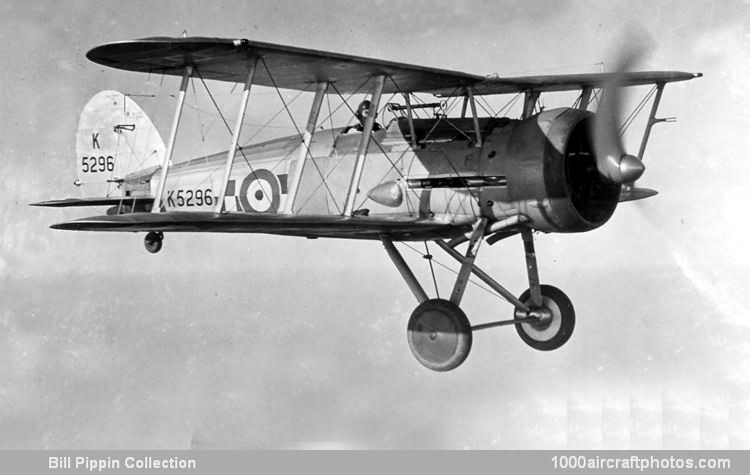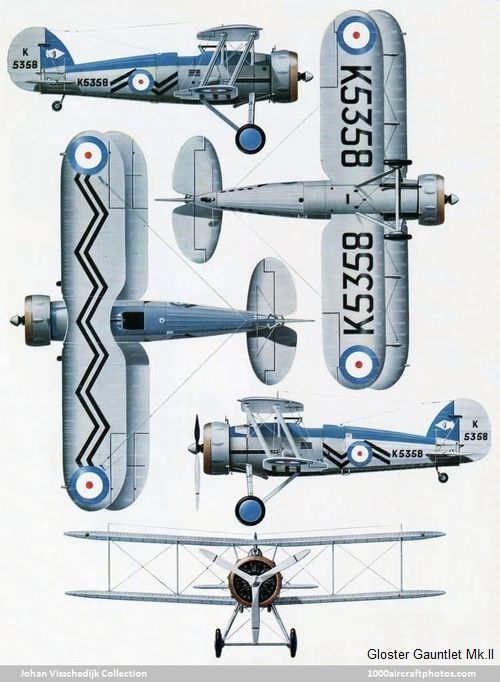11/30/2012. Remarks by Johan Visschedijk: "Competing against the Boulton Paul Partridge, the Armstrong Whitworth A.W.16 Starling Mk.II and the Hawker Hawfinch to meet the requirements of Specification F.20/27 for a single-seat fighter built principally of steel or duralumin, the Gauntlet began life as the SS.18 (s/n J9125). It was designed to the contemporary F.10/27 specification and flew as such in January 1929, initially with a Mercury IIA engine. This power plant was subsequently replaced by a 480 hp Jupiter VIIF (as the SS.18A) and then by a 560 hp Panther III (as the SS.18B), the Jupiter later being reinstated (as the SS.19).
In its last-mentioned form, it was tested with four wing-mounted 0.303 in (7.7 mm) Lewis guns and two fuselage-mounted Vickers guns of the same caliber. The wing-mounted guns were later removed (as the SS.19A), and with the 536 hp Mercury VIS engine (as the SS.19B), this was ordered into production in February 1934 with a twin Vickers Mk V-gun armament and a 640 hp Mercury VIS2 as the Gauntlet. The first production aircraft was completed in the following December.
Twenty-four Gauntlet Mk.Is (s/n K4081 to K4104) built by the parent company were followed by 204 Gauntlet Mk.IIs (s/n K5264 to K 5367, K7792 to K7891) with revised (Hawker-type) structure. Seventeen were license-built in Denmark (s/n J-22 to J-38) by the Army Aviation Troops' Workshops (after procurement of one pattern aircraft, K4081 which became J-21), and ex-RAF Gauntlet Mk.IIs disposed of abroad comprised three to Rhodesia, four to South Africa and 25 to Finland. Six were later assigned to the RAAF in the Middle East."

